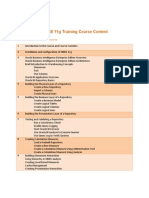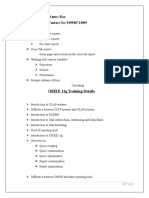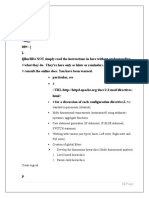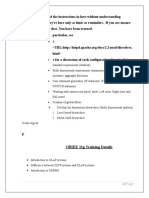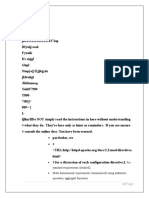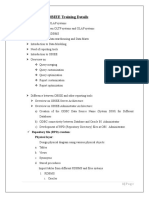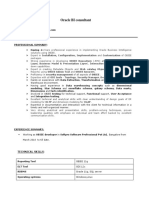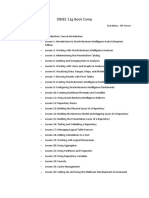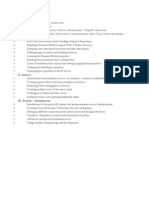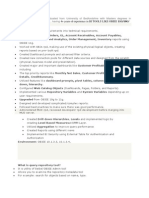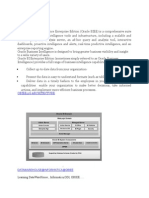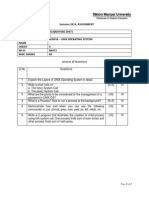0% found this document useful (0 votes)
95 views2 pagesOBIEE 11g Training Course Content: 4. Basic RPD Creation Using Scott (Oracle DB)
The OBIEE 11g training course covers topics such as the history of OBIEE, dimensional modeling concepts, creating RPDs using Oracle databases and Excel, building the physical, business model and presentation layers, security administration, caching, prompts, dashboards, agents, direct database requests, and migrating RPDs from OBIEE 10g to 11g.
Uploaded by
dogra.diwakar8365Copyright
© © All Rights Reserved
We take content rights seriously. If you suspect this is your content, claim it here.
Available Formats
Download as DOCX, PDF, TXT or read online on Scribd
0% found this document useful (0 votes)
95 views2 pagesOBIEE 11g Training Course Content: 4. Basic RPD Creation Using Scott (Oracle DB)
The OBIEE 11g training course covers topics such as the history of OBIEE, dimensional modeling concepts, creating RPDs using Oracle databases and Excel, building the physical, business model and presentation layers, security administration, caching, prompts, dashboards, agents, direct database requests, and migrating RPDs from OBIEE 10g to 11g.
Uploaded by
dogra.diwakar8365Copyright
© © All Rights Reserved
We take content rights seriously. If you suspect this is your content, claim it here.
Available Formats
Download as DOCX, PDF, TXT or read online on Scribd
/ 2

